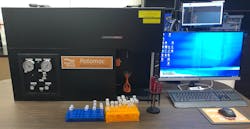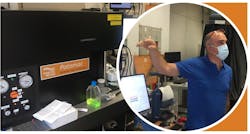Kinetic River delivers custom flow cytometer to National Research Council
Flow cytometry instrumentation maker Kinetic River (Mountain View, CA) has delivered its flagship Potomac customizable flow cytometer to the National Research Council (Naples, Italy). It was installed by CytoFlowService/EMC2, the company’s distribution and service partners for Europe, in the Institute for the Electromagnetic Sensing of the Environment (IREA) at the National Research Council (CNR). It will be used to perform label-free analysis of biological samples and to run water quality tests.
The Potomac fully customizable flow cytometer offers a range of customization options, including incorporation of exotic light sources, unusual excitation configurations, use of silicon photomultiplier detectors, and full ability to tailor flow conditions over a 1000-fold range. Design and production of the Potomac for the IREA-CNR was carried out at Kinetic River's laboratories in Mountain View.
The customized Potomac flow cytometer for IREA-CNR was designed to use three separate light sources at 375, 405, and 266 nm. It features nine detection channels, including forward scatter, side scatter, and seven fluorescence channels, with three channels for future upgrades. Ultimately, this customized system provides scientists at IREA-CNR with the ability to use lasers from violet to deep-ultraviolet to excite autofluorescence in human cells for biomedical applications. The instrument can also be used to measure cyanobacteria—which are common contaminants in water reservoirs—enabling label-free analysis of water samples.Dr. Romeo Bernini, Research Director at IREA-CNR, says they specifically requested a violet/UV excitation configuration to meet their needs to use short wavelengths both to generate autofluorescence and to detect nanoparticles for biomedical applications. The instrument, he says, also gives them the possibility to access to raw waveform data.
For more information, please visit kineticriver.com.
Source: Kinetic River press release via PR Newswire – November 9, 2020

